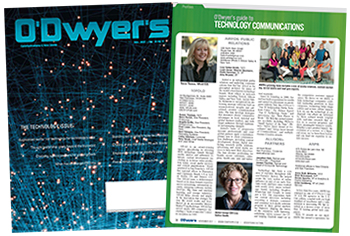|
|
It’s critical for communications and public relations professionals to adopt new strategic methods to optimize their messaging in order to reach the audiences that matter most.
Communications teams must also consider the best ways to utilize big data technology and devise new approaches to measurement that are campaign-specific and aligned with company goals.
The PESO model
Website and blog platforms continue to enhance their features through personalized timelines, filtered newsfeeds and ad-targeting methods in an effort to create a unique and rewarding experience for each individual. PR professionals should be encouraged to move away from narrow, one-size-fits-all campaigns that focus their efforts on a single type of media and instead adopt a multi-faceted approach that incorporates paid, earned, shared and owned media channels.
|
|
By spreading a company’s messaging across various media channels, the PESO model provides more opportunities for an initiative or a product launch to reach and impact key audiences. In other words, the message has more paths to success.
The holistic nature of the PESO model also makes it an asset for relationship-building among the media and with customers. A campaign launch that utilizes a company’s full breadth of media channels and resources can direct readers and viewers to a company’s additional platforms to learn more and explore further.
For example, an earned op-ed can include links that direct readers to a company website and specific social media pages, which in turn can lead to related videos and interactive content. This is more engaging for audiences than a one-sided approach of only a paid or earned platform, since users will commit to spending more time learning a brand’s story or a campaign’s purpose.
Creating effective content
PR professionals can best utilize the PESO model by ensuring their content is created with the target audience in mind. The creative process should always start at the end: who is this intended for and what message should they take away from this? Companies should not simply produce content for the sake of content. Build materials with the key group always in consideration so that the end result will be tailored and specific to their interests and actions.
In addition to the audience, communications teams should know the ins and outs of the media channels that the content will live on. A high-performing communications professional should understand what works and what doesn’t on certain channels; this understanding will support a company’s goal of generating the most effective materials for establishing a brand story and reputation.
Stay up-to-date with emerging platforms and shifting site popularity by conducting regular audits of the company’s frequently used channels. Audits will also help assess if each platform is still reaching target audiences and benefitting the company as it has in the past.
Measuring success
As in any aspect of business, PR and marketing campaigns must establish goals and measures for success at the outset. Once a campaign is launched, the communications team should have in mind clear indicators that people — particularly priority stakeholders — are engaging with the content. Like the PESO approach for distributing deliverables, the process for setting the barometer of success is not a one-size-fits-all solution.
The checkpoints for a campaign should be specific to each initiative and platform. For example, if a company released a video via Facebook to raise awareness on a particular subject matter impacting their bottom line, communications professionals should set a target number of views to gauge effectiveness, as opposed to likes or comments.
The audience should also be taken into consideration when evaluating success. A high level of engagement is of little value unless the right people are interacting with the content. This is where communications professionals can leverage social media monitoring technologies that provide analytics broken down by demographic and other specifications.
These capabilities can also analyze engagement by sentiment, providing insight into how the content resonates with stakeholders. This allows companies to measure success qualitatively as well as quantitatively.
The wealth of information and conversation in today’s media can be daunting, but should not deter PR and marketing departments from creating new and impactful narratives. The PESO model provides a head-on approach for tackling the landscape through channel diversification and audience specification.
Setting the right goals and priorities on a campaign-by-campaign base will help identify key measurement indicators and will go a long way in defining success. By leveraging all the resources at your disposal, you will not only meet, but exceed message impact expectations.
***
Sanjay Kulkarni is global head of PR solutions at Nasdaq Corporate Solutions.

 Sanjay Kulkarni
Sanjay Kulkarni

 Laura Anderson, who rose to VP/GM of global communications and events in a nearly 20 year stint at Intel, will take on the Americas technology chair at Burson following the completion of the BCW and H+K merger on July 1.
Laura Anderson, who rose to VP/GM of global communications and events in a nearly 20 year stint at Intel, will take on the Americas technology chair at Burson following the completion of the BCW and H+K merger on July 1. WE Communications has partnered with ROKK Solutions to form the WE ROKK AI service.
WE Communications has partnered with ROKK Solutions to form the WE ROKK AI service. In the dynamic world of modern business, effective communication is a pivotal tool for success across various industries. At Communications Strategy Group (CSG®), our expertise in embracing innovation in communication extends beyond traditional marketing strategies, paving the way for transformative industry-specific solutions.
In the dynamic world of modern business, effective communication is a pivotal tool for success across various industries. At Communications Strategy Group (CSG®), our expertise in embracing innovation in communication extends beyond traditional marketing strategies, paving the way for transformative industry-specific solutions. There are two types of tech PR professionals. Which one are you? And are C-suite executives making that decision for you?
There are two types of tech PR professionals. Which one are you? And are C-suite executives making that decision for you? While there’s an impulse to grab reporters’ attention with the newest industry-transforming tech product or service, a back-to-basics approach focused on telling the right stories to the right people is a far more successful way to ensure your technology campaign breaks through the clutter of today’s crowded tech landscape.
While there’s an impulse to grab reporters’ attention with the newest industry-transforming tech product or service, a back-to-basics approach focused on telling the right stories to the right people is a far more successful way to ensure your technology campaign breaks through the clutter of today’s crowded tech landscape.


 Have a comment? Send it to
Have a comment? Send it to 
No comments have been submitted for this story yet.